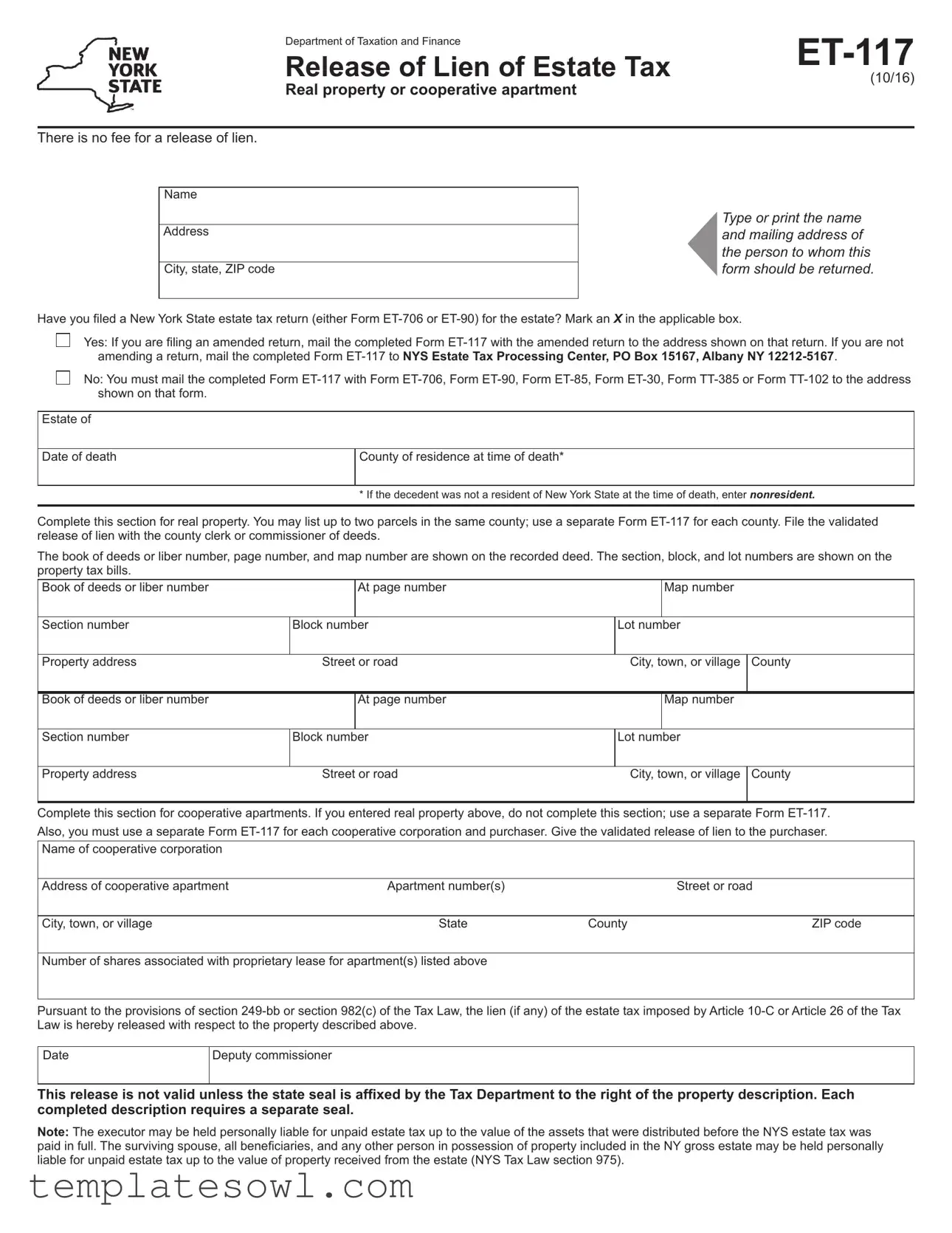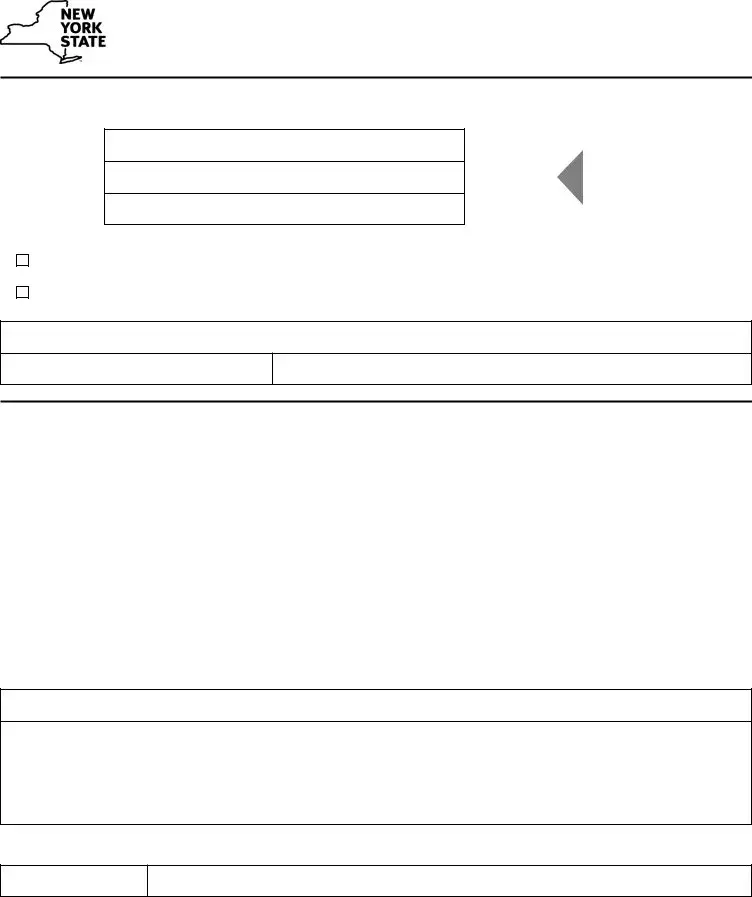What is the ET-117 form?
The ET-117 form, known as the Release of Lien of Estate Tax, is a document used in New York State to release any lien that may have been placed on real property or cooperative apartments due to unpaid estate taxes. This release indicates that any estate tax obligations associated with the designated property have been satisfied.
Who needs to complete the ET-117 form?
The ET-117 form should be completed by the executor of the estate or an authorized representative. It is necessary if there has been a New York State estate tax return filed for the estate. This includes situations where an estate tax return needs to be amended. If there are properties or cooperative apartments tied to an estate, this form becomes important for ensuring that liens are cleared from those holdings.
Is there a fee associated with filing the ET-117 form?
No, there is no fee required for filing the ET-117 form. This can provide relief to those managing the estate by avoiding additional costs during an already complex process.
What documents must be submitted along with the ET-117 form?
If you have filed a New York State estate tax return, the ET-117 can be mailed alone or alongside an amended return. If you have not filed a return, you must send the completed ET-117 form along with other estate tax forms, such as Form ET-706, Form ET-90, Form ET-85, Form ET-30, Form TT-385, or Form TT-102.
What information is required about the deceased?
The form requires certain details about the deceased, including the date of death and the county of residence at the time of death. If the decedent was not a resident of New York State, you should indicate "NONRESIDENT."
How many properties can be listed on one ET-117 form?
You may list up to two parcels of real property in the same county on a single ET-117 form. If you have properties in different counties, you need to complete separate forms for each county to ensure accurate processing.
What should I do with the validated release of lien?
Once you receive the validated release of lien, it is essential to file it with the county clerk or commissioner of deeds. This will officialize the release in public records, ensuring that there are no lingering legal claims against the property or cooperative apartment.
What if the property is a cooperative apartment?
If the property in question is a cooperative apartment, you will need to fill out the appropriate sections specific to this type of property. Remember to use a separate ET-117 form for each cooperative corporation and its associated properties. The validated release of lien must be provided to the purchaser of the cooperative apartment.
What are the consequences of not paying estate tax?
If estate taxes are not paid in full, the executor may be held personally liable for any unpaid amounts, up to the value of the assets distributed. Additionally, surviving spouses, beneficiaries, and anyone in possession of property included in the gross estate may also be held personally liable for any unpaid estate tax. It is important to keep this in mind while managing estate transactions.

